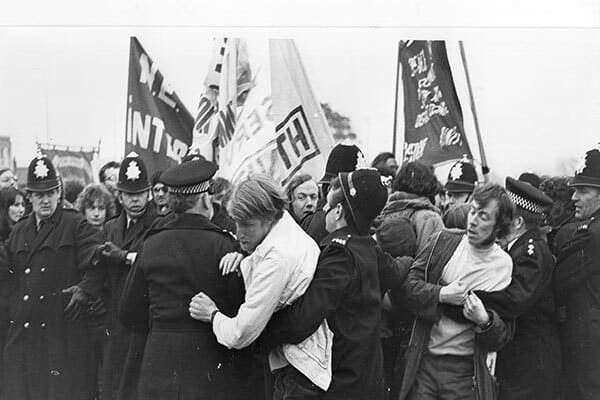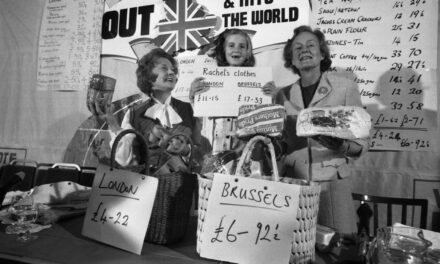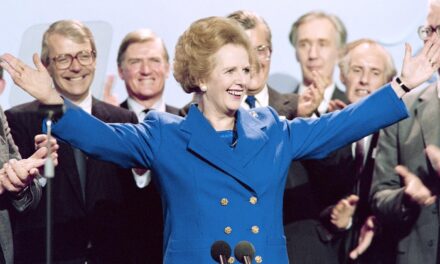1974 proved a pivotal year in Britain, with political bombshells, economic anxiety, and a retreating postwar order giving way to new uncertainties. The year saw Harold Wilson’s Labour government returned to power twice in close elections marked by the UK’s first national coal miners’ strike since 1926. Meanwhile, escalating inflation and IRA terror bombings signalled growing instability. However, 1974 also unleashed an explosion of groundbreaking music, TV and culture that spoke to shifting generational attitudes.
Glam rock gods like David Bowie ruled the charts with alter-egos like Halloween Jack, while Kraftwerk’s Autobahn synthesised hypnotic electronic beats. Comedy icon John Cleese moved beyond Monty Python’s Flying Circus to launch the immortal Fawlty Towers. In children’s entertainment, the whimsical animation of Bagpuss delighted young imaginations. At cinemas, the disaster epic The Towering Inferno encapsulated 1970s anxieties, while Chinatown redefined neo-noir cool.
On the sports front, legendary racehorse Red Rum claimed an emotional second Grand National victory, while Muhammad Ali knocked out George Foreman in the iconic “Rumble in the Jungle” bout. In FA Cup football, Liverpool and Newcastle United produced a Wembley thriller for the ages. The year closed with fledgling motoring show Top Gear revving up its first episodes.
However, beneath the pop culture highlights, Britain faced grave new pressures as postwar prosperity receded. Rampant inflation, spiking oil prices from the OPEC crisis, and rising unemployment darkened the public mood. Sectarian terror threats escalated in Northern Ireland, while industrial unrest reached explosive new levels nationwide.
With Harold Wilson’s government barely surviving on a knife’s edge majority, two snap general elections underscored how precariously power hung as the year closed. As Britain steeled itself for stormy new realities in the coming 1970s, 1974 proved a year of pivotal power shifts, cultural innovation and creeping uncertainty. The nation’s institutions and identity faced profound questions and challenges amidst the gathering storms.

Music
Abba Wins Eurovision for Sweden
n 1974, Swedish pop sensation ABBA stormed to victory at the Eurovision Song Contest held in Brighton, England performing their soon-to-be classic “Waterloo.” The win propelled ABBA to international stardom and remains one of the most iconic moments in Eurovision history. Britain’s entry “Long Live Love” sung by Olivia Newton-John came 4th, continuing the country’s mixed results at Eurovision during the 1970s.
ABBA had formed just two years earlier, comprised of two married couples – Agnetha Fältskog, Björn Ulvaeus, Benny Andersson and Anni-Frid Lyngstad. After achieving success in Scandinavia with their debut album, Eurovision provided the perfect platform to conquer the wider European market.
Their winning song “Waterloo” epitomised the kind of catchy, melodic pop that would make ABBA a global phenomenon throughout the decade. Performed amidst eye-catching sequinned outfits, the band’s synchronised dance moves and infectious harmonies immediately captured millions of viewers’ hearts during the live televised broadcast.
When voting ended, Sweden finished with 24 points, narrowly beating favourites Italy by 6 points to take the crown. Britain’s entry “Long Live Love” performed by future superstar Olivia Newton-John came 4th, continuing the country’s run of lacklustre Eurovision results that decade.
ABBA graciously accepted their win from presenters Michael Aspel and Katie Boyle at the Brighton Dome. Holding aloft the distinctive crystalline trophy, ABBA thanked viewers in English saying “We thank you very much.” Their victory reversal after Sweden finishing third the previous year demonstrated Eurovision’s entertaining unpredictability.
“Waterloo” shot to #1 across Europe and Australia after the contest, cementing ABBA as global breakout stars. It would go on to sell over 6 million copies worldwide, kicking off a decade of record-breaking success and making ABBA one of the biggest-selling pop acts in history.
By contrast, runner-up Britain’s entry “Long Live Love” enjoyed only brief chart success domestically. However, Olivia Newton-John herself would become a sensation with hits like “Physical” later that decade. The 1974 contest showcased her talent just before she conquered Hollywood too.
For ABBA, their “Waterloo” represented a watershed career-launching moment. From a TV talent show sprang one of pop’s greatest success stories.

David Bowie Retires Ziggy Stardust
David Bowie shocked fans and the music world when he abruptly retired his iconic persona Ziggy Stardust in the middle of a concert at London’s Hammersmith Odeon. The surprise announcement came near the end of his tour supporting album The Rise and Fall of Ziggy Stardust and the Spiders from Mars, widely considered his breakthrough. Bowie’s unexpected move demonstrated his relentless artistic reinvention and constant need to evolve beyond whatever identity he had built up.
For over a year, Bowie had immersed himself in the flamboyant, otherworldly character of Ziggy Stardust – an androgynous, bisexual rock star messiah figure. With his spiky red mullet, futuristic jumpsuits and heavily made-up face, Ziggy captured glam rock excess while Bowie’s theatrical live shows turned his concerts into spectacles.
Songs like “Moonage Daydream,” “Starman” and “Suffragette City” made Ziggy an iconic representation of rock theatricality in the early 70s. But after 18 exhilarating, exhausting months of touring and global promotion in character, even Bowie had tired of his demanding creation.
So that July night at Hammersmith, he stepped on stage for the encore in a plain shirt and trousers, looking dramatically unlike his usual outrageous alter ego. After playing “Rock N Roll Suicide,” Bowie made the bombshell announcement: “Not only is this the last show of the tour, but it is the last show we will ever do.” The Ziggy Stardust persona was no more.
Fans were shocked that Bowie would summarily retire his most popular creation at the peak of its success. But true to his mercurial nature, Bowie was already moving on creatively, unwilling to be trapped by Ziggy’s identity despite its popularity.
The ingenious move secured Ziggy’s enigmatic mythology and freed Bowie to reinvent himself again as Halloween Jack and later, The Thin White Duke. His constant evolution demonstrated brilliant artistic instincts and a willingness to challenge audiences, ensuring Bowie’s enduring cultural legacy as a pioneer.
While Ziggy’s time was short, his otherworldly aura had profoundly changed pop culture. But for Bowie, no alter ego could last forever, however beloved. Hammersmith 1973 marked the dramatic end of his most iconic creation and the restless search for the next inspiration beginning again.

George McCrae Has UK No.1 with “Rock Your Baby”
In 1974, American singer George McCrae rocketed to international stardom on the back of his infectious chart-topping hit “Rock Your Baby.” With its slick grooves, soulful vocals, and easy pop sensibility, the track is considered one of the first true disco songs and a landmark of the early dance music era. Its mixture of funky rhythms, pop hooks, and rising synthesisers created an irresistible new sound that would heavily influence dance floor-focused music for decades to come.
Born in West Palm Beach, Florida, McCrae had served in the Navy and sung in nightclubs before getting his big break from husband-wife producing duo Harry Casey and Richard Finch. After laying down the catchy, stripped-down baseline, Finch decided McCrae’s falsetto vocals were perfect for this dance floor-ready track celebrating the joy of motion and music.
When released as a single in April 1974, the upbeat “Rock Your Baby” quickly caught fire in clubs and zoomed up the charts. By July, it reached #1 on the Billboard Hot 100, also topping charts in Canada, France and the Netherlands. McCrae’s high, easy vocal glide, paired with the churning rhythm section and sparse synthesiser pulses, created a vibe both funky and poppy enough for mainstream radio play.
The anthemic chorus inviting listeners to “Rock your baby, rock your baby” made partying along irresistible. “Rock Your Baby” shifted two million copies in under two months in America alone, making it one of the fastest selling singles ever. It anchored McCrae’s album “Rock Your Baby,” also a big success.
McCrae became the first solo African American artist since Chuck Berry to have a transatlantic #1 pop hit. “Rock Your Baby” helped bring the dance-focused rhythms of underground disco into popular consciousness. Echoes of its signature pulse and falsetto vocals continued reverberating in dance-pop for decades afterwards.
While McCrae struggled to replicate the phenomenal success of his breakthrough, “Rock Your Baby” permanently etched him into music history as a pioneer who helped popularise disco and shape the future of pop. Decades later, few songs inspire carefree dance floor joy like this timeless 1974 smash hit.
Entertainment
Harry Worth Show Concludes After 13 Years on BBC
In 1974, comedian Harry Worth announced that he was ending his popular eponymous BBC sitcom after a successful 13-year run. Titled ‘Here’s Harry’, the show featured Worth getting caught up in silly situations and using visual gags and wordplay rather than traditional jokes. Its gentle family-friendly humour made it a fixture of Saturday night viewing throughout the 1960s and early 70s. However, by 1974 Worth felt that the program had run its course, drawing the curtains on the genial show that defined his comedy career.
‘Here’s Harry’ debuted on BBC in 1961, with Worth playing a bumbling everyman character regularly bamboozled by life’s mundane mishaps. Filmed in black-and-white, episodes focused on silent visual stunts and sight gags as Worth interacted with ordinary objects like ladders and hoses in ridiculous ways. The show’s reliance on physical comedy and avoidance of topical references gave it an ageless, timeless appeal.
Starring alone on screen with barely any dialogue, Worth’s harmless misadventures and expressive face endeared him to viewers. His tweed suits and hat created a trademark exasperated underdog image. Plots often culminated in his catchphrase exclamation of “My life’s not worth living!” uttered after his latest fiasco.
While unsophisticated by today’s standards, ‘Here’s Harry’ became embedded in Britain’s cultural consciousness over 13 years and more than 150 episodes. It ranked among BBC’s longest-running programs, reliably delighting households-seeking unchallenging weekend entertainment.
However, by 1974 Worth felt he had exhausted the show’s premise and his ageless character needed retirement. Final episode ‘The Matchmaker’ aired on May 4, 1974, attracting an audience of over 9 million viewers. It marked the dignified conclusion of a sitcom staple without trying to be too sentimental.
Worth continued performing until the early 1990s, but remained best-known for the gentle farces of ‘Here’s Harry’. Reruns kept it in rotation for years after. While today largely forgotten except by comedy devotees, in its heyday Harry Worth’s benign clowning and resilient charm made him the iconic face of family-friendly British sitcom entertainment.

Culture
Birmingham Pub Bombings Kill 21
On November 21, 1974, bombs planted by the Provisional Irish Republican Army (IRA) exploded in two crowded pubs in Birmingham, England, killing 21 innocent civilians and injuring 182 others. The lethal attacks further intensified the ongoing unrest in Northern Ireland, known as The Troubles, and sparked outrage in Britain over the IRA’s indiscriminate targeting of public spaces. The bombings proved a low point in relations between Britain and Ireland and added to pressures within Northern Ireland’s Catholic community against violence.
That tragic evening, IRA members placed timed explosives in the Mulberry Bush and Tavern in the Town pubs in Birmingham city center, which were filled mostly with students and young people. The first bomb detonated at 8:17 PM at the Mulberry Bush, destroying much of the premises and causing fatalities. Minutes later, the second bomb exploded at the Tavern in the Town, leading to nearly a dozen more deaths and over 100 injuries.
The coordinated explosions tore through bustling drinking spots with devastating effect. Body parts lay strewn amidst destroyed furniture and shattered glass. First responders faced a nightmarish scene trying to aid the survivors. Birmingham residents were left reeling at the unexpected havoc and loss of life.
The IRA had chosen targets far from Northern Ireland to bring urgency to their demands for British withdrawal from the North. However, the deaths of innocent civilians for political aims caused enormous backlash. Thousands gathered in Birmingham for solemn funerals as outrage grew. Though the IRA denied involvement, authorities arrested six Irishmen who were later acquitted due to botched forensics.
The Birmingham pub bombings fuelled anti-IRA sentiment in Britain as needless tragedies. Within Northern Ireland’s Catholic community, support declined for the IRA’s militarism in the face of such senseless attacks. Two decades later, the IRA officially apologised for the civilian casualties.
The 1974 Birmingham bombings marked one of the IRA’s most notorious atrocities, hardening views against their extreme methods. The 21 killed were simply seeking a night’s leisure before being swept up in Ireland’s bitter conflict.
Postage Stamp Prices Increase Dramatically
In 1974, the cost of postage stamps in the UK saw a dramatic multi-fold increase, jumping from 3p to 4p for first class and 2p to 3p for second class. The overnight price hike was met with outrage from the British public and businesses already facing economic turmoil and rising inflation. The stamp increase came to symbolise the erosion of living standards and corporate greed to many, sparking a war of words between the post service and critics.
The state-run General Post Office (GPO) had requested the price increases from the Post Office Board, citing losses from unprecedented inflation exceeding 20%. They warned that without hiking stamp prices, their service would have collapsed amidst ballooning costs.
However, when the price hike came into effect in June 1974, the British public erupted in anger. Consumer groups blasted the 100% first class and 50% second class rises as prohibitively steep, branding them “daylight robbery.” With pay failing to keep up with inflation, many felt the sudden stamp price increases unjustly punished regular citizens already suffering economic pains.
Newspaper editorials accused the Post Office of exploiting its monopoly and profiting from inflation. Politicians called the hike an unacceptable burden on households and small businesses heavily reliant on post. The public outcry focused on stamp prices increasing seemingly overnight without warning.
The Post Office defended the rises as the only way to prevent total financial collapse and maintain daily services. However, they soon introduced concessions like discounts for bulk business mailings to alleviate public frustrations. The conflict reflected Britain’s unstable economy and erosion of living standards in the early 1970s.
While inflation inevitably necessitated price increases, the optics of dramatic hikes on something as ubiquitous as postage stamps caused anger. The episode became a symbol of businesses callously passing higher costs onto consumers already fed up with the economy’s troubles. The stamp price row marked an inflection point in relations between corporate institutions and the British public amidst the inflationary 1970s.

Thames Barrier Construction Commences
In 1974, construction commenced on the Thames Barrier, an ambitious flood defence system built to protect London from dangerously high storm surges moving up the River Thames. With the city historically vulnerable to tidal flooding, the Thames Barrier project marked a major civil engineering endeavor to safeguard London against future disasters through movable gates that could seal off the river when needed.
Planning for the Thames Barrier began after the North Sea flood of 1953, which led to over 300 deaths in the Netherlands and significant flooding in London. That catastrophe highlighted the city’s vulnerability as water levels rose more than 17 feet higher than normal. With climate models predicting rising sea levels and more frequent storms, a permanent flood defence system was deemed essential.
After two decades of studies and proposals, final plans emerged in the early 1970s for a system of 10 movable gates stretching over 500 meters across the Thames near Woolwich. The gates could swing shut and seal off the river during extreme high tides or storm surges threatening upriver communities.
Construction finally began in 1974, representing one of the largest civil engineering projects in Europe. The barrier’s foundations required over 18,000 tons of steel and 30,000 cubic meters of concrete. Rotating gates were assembled onsite and integrated into the growing structures spanning the river.
Work continued 24 hours a day, with completion projected for 1982. When finished, the Thames Barrier would be the world’s second largest movable flood barrier, offering London protection against once-in-a-century storm events.
While an immense undertaking, the Thames Barrier project was deemed vital for shielding London’s 15 million residents from tragic flooding episodes. Upon completion, the Barrier’s sweeping steel gates would stand ready to swing into action and hold back the swelling Thames whenever storms unleashed their worst.
Politics
Harold Wilson Re-elected Prime Minister
Two snap general elections in the United Kingdom saw Labour Prime Minister Harold Wilson returned to 10 Downing Street twice, while Conservative Edward Heath’s premiership ended after failing to secure a majority in either vote. Wilson’s comeback amidst economic turmoil and labour unrest underscored Britain’s political volatility in the early 1970s as no leader seemed capable of commanding firm control.
Wilson had previously served as Prime Minister from 1964 to 1970 before Heath’s Conservatives unseated Labour. By 1974, instability plagued Heath’s government as inflation soared over 20%, unions agitated for higher pay, and Northern Ireland descended into violent chaos. Sensing opportunity for a dramatic reversal, Wilson called for a February 28 election to restore Labour to power.
The campaign centred on economic management and British membership in the European Economic Community, which Labour had opposed under Wilson before. Most expected a close contest, but ultimately Labour won 301 seats to the Conservatives’ 297, leaving Wilson 5 seats short of an overall majority but able to form a minority government. Heath had gambled by calling a snap election, only to face a razor-thin loss.
With Britain mired in crisis and Labour dependent on smaller parties, a second 1974 election seemed imminent to solidify Wilson’s mandate. By October, Wilson called for voters to again choose between his leftist platform and the struggling Heath. This time, Labour made greater gains, winning 18 more seats to cement a 319-277 advantage over the Conservatives.
While far from decisive given Britain’s turmoil, Wilson’s return to Downing Street marked a stunning turnaround from 1970. However, governing remained a monumental challenge with razor-thin majorities. Two 1974 elections in one year emphasised Britain’s state of political flux as economic chaos continued. Wilson’s resurrection proved a pyrrhic victory amidst the maelstrom.

Sunningdale Agreement Collapses in Northern Ireland
In May 1974, the Sunningdale Agreement to establish a power-sharing Northern Ireland Executive collapsed just months after being negotiated, representing a major setback to resolving violent tensions in the region. The cross-community governance pact dissolved after mass strikes and paramilitary threats from unionist groups opposed to any deal with nationalists. The failure highlighted Northern Ireland’s deep divides as the Troubles raged on.
Sunningdale sought to end the violence between nationalists and unionists by creating a power-sharing Northern Ireland Executive with representation from both communities. Unionist leader Brian Faulkner served as Executive head, while nationalists like Gerry Fitt took other cabinet roles. A Council of Ireland also established links between Belfast and Dublin, reflecting nationalist aspirations.
However, radical factions like the Ulster Workers’ Council and Ulster Volunteer Force resisted the Agreement as undermining Northern Ireland’s place in the UK. In May 1974, loyalist groups launched the Ulster Workers’ Strike, bringing industry and infrastructure to a halt. With loyalist workers refusing to maintain power stations, water supplies were disrupted, precipitating a major crisis.
As Britain struggled with economic turmoil and two snap elections, it failed to effectively intervene, allowing the unrest to spiral. With pressure building, Faulkner resigned as Executive head on May 28, 1974. The ill-fated Sunningdale Agreement had lasted barely six months before splitting apart.
Northern Ireland Secretary Merlyn Rees formally dissolved the Executive, bringing Sunningdale to a definitive end. Its demise marked a grave setback in resolving the Troubles after an initially promising pact between bitterly opposed factions. Decades more bloodshed would follow before the Good Friday Agreement finally instituted an enduring power-sharing model in 1998.
Sunningdale’s failure spotlighted the depth of divisions within Northern Ireland that hindered any accommodation in the 1970s. Though valiantly envisioned, power-sharing underestimated the distrust between communities scarred by sectarian hatreds. Northern Ireland’s future would remain bleak for many years to come.
Three-Day Week Ends
In March 1974, the controversial Three-Day Week introduced by Edward Heath’s government to conserve electricity finally ended after two tense months. The policy had mandated businesses nationwide could only operate for three days per week in response to crippling coal shortages caused by miners’ strikes. With the crisis easing as miners returned to work, businesses could resume full 5-day operations. However, the impact of the makeshift policy underlined Britain’s fragility amid 1970s economic chaos.
The Three-Day Week began in December 1973 when miner strikes cut coal production by over 70%, drastically curtailing power supplies. To avoid exhausting electricity reserves and enforcing blackouts, Heath restricted commercial energy usage to just three consecutive days per week. Special lighting and heating limits were also imposed on homes and offices.
The policy required an estimated 2.7 million Britons to be furloughed part-time, costing billions in lost productivity. Business leaders warned of grave economic consequences and demanded resumed operations. By February 1974, power cuts ceased being imminent as miners gradually trickled back to work.
On March 6th, Prime Minister Harold Wilson’s new Labour government officially ended the Three-Day Week after 10 tense weeks. The move brought enormous relief to businesses eager to resume normal schedules. Workers welcomed returning to five days’ pay after the financial strains caused for many households.
While an emergency response to potential blackouts, the Three-Day Week was heavily criticised as draconian and heightening economic damage. However, Heath insisted it was necessary to prevent total electricity failure and keep essential services running. The controversial policy exemplified desperate measures required as 1970s conditions worsened.
Though finally concluded by March, the Three-Day Week’s wider impact lingered over Britain’s economy and society. It demonstrated the country’s vulnerability to domestic fuel disruptions as growth faltered. Many hoped its conclusion signalled calmer days ahead, but 1970s instability would continue plaguing Britons for the rest of the decade.

Sports
Don Revie Appointed England Football Manager
The England national football team made a controversial managerial appointment by selecting Don Revie, who had abruptly resigned his post at Leeds United days prior. The surprise move provoked outrage from Leeds supporters and accusations of betrayal, while English football authorities endorsed the hiring of a proven winner like Revie. After 13 acclaimed years guiding Leeds, Revie now faced huge expectations to translate his club success to the international stage.
Regarded as one of England’s sharpest tactical minds, Revie had honed Leeds into an elite powerhouse, winning two First Division league titles, two Inter-Cities Fairs Cups and an FA Cup. With England struggling after failing to qualify for the 1974 World Cup, the Football Association sought Revie’s expertise and ambition.
However, Revie had not even informed Leeds of his desire to depart before the news broke. On July 4th, 1974, he stunned players and supporters by suddenly quitting Elland Road to succeed Sir Alf Ramsey as England manager. Fans reacted with fury at Revie seemingly abandoning the club he built from scratch.
Leeds’ management accused the FA of inappropriately tapping up Revie before finalizing his resignation. But the governing body insisted they had followed protocol in recruiting one of England’s foremost coaches. For the ambitious Revie, the lure of guiding his country’s team proved too compelling to pass up.
Revie’s first matches saw positive results, with England defeating Czechoslovakia 3-2 and Wales 2-0 in qualifying for the 1976 European Championships. But controversy continued swirling around the nature of his appointment. By 1977, Revie would leave the England job entirely under a cloud to manage the United Arab Emirates.
While Revie enjoyed tremendous accomplishments with Leeds, his departure tarnished his legacy there. And his rocky England tenure fell short of replicating his club success. The controversial 1974 move marked a turning point in Revie’s esteemed but enigmatic managerial career.
Mary Peters Wins Gold for Northern Ireland
At the 1974 British Commonwealth Games held in Christchurch, New Zealand, Northern Irish athlete Mary Peters won gold in the women’s pentathlon event in spectacular fashion. Peters’ thrilling victory in the demanding multi-discipline event represented the peak performance of her distinguished athletic career. Her achievement stood as a rare shining light amidst the darkness of the Troubles tearing Northern Ireland apart.
Then aged 34, Peters entered the 1974 Commonwealth Games as the reigning champion, having won pentathlon gold four years earlier in Edinburgh. She prepared intensely to defend her title against top rivals like Australia’s Wendy Holden and England’s Adrienne Emberton. The stakes were raised further as women’s pentathlon was making its debut as an official event at the upcoming 1976 Montreal Olympics.
Over two days, the five demanding pentathlon events tested speed, jumping, hurdling, throwing and endurance skills. After the first day of competition, Peters trailed Holden by 12 points. But on day two, the Northern Irishwoman delivered a series of personal best performances to dramatically close the gap.
Going into the final 800m event, Peters had moved into first position ahead of Holden and Emberton. In front of 20,000 spectators, she completed the 800m in a blistering 2:09.63 to clinch gold and set a new Commonwealth Games record of 4,801 total points. Her supporters roared as Peters realised a long-held dream of pentathlon victory on the global stage.
Peters’ nail-biting triumph marked the first time a Northern Irish athlete had won gold at the Commonwealth Games. Her achievement was broadly celebrated as a hopeful sign amidst the sectarian strife plaguing her homeland. Mary Peters had flown the Northern Irish flag highest through her inspiring display of skill and determination.

Red Rum Wins Second Grand National
The legendary racehorse Red Rum captured an emotional back-to-back Grand National title at Aintree, cementing his status as one of the event’s greatest champions. Ridden by jockey Brian Fletcher, Red Rum overcame tough conditions and a fierce challenge to cross the line first in racing’s ultimate test of endurance and courage. His unprecedented consecutive triumphs captured the British public’s imagination and made him an equestrian icon.
The 1974 Grand National marked Red Rum’s fifth attempt at conquering the gruelling 4 1⁄2 mile course with its treacherous 30 fences. Two years earlier, he had claimed an epic victory after being the pre-race underdog. Now Red Rum returned as the defending champion aiming to enter the history books again.
A massive crowd of over 500,000 descended on Aintree racecourse for Grand National day on March 30, 1974. Under leaden skies, the starters lined up with Red Rum and Fletcher beginning from the 15 spot. As the 39 runners thundered down the course, Fletcher held Red Rum towards the middle of the pack through the early stages.
By the time they reached the infamous Becher’s Brook fence, Red Rum was still biding his time outside the top 10 placings. But his stamina came into play in the second half of the race, as Fletcher edged him up through the field. Coming into the infamous Canal Turn, Red Rum sat fourth and poised to pounce.
Charging ahead over the final fences, Red Rum duelled with eventual third-place L’Escargot while surging closer to the tiring leader Highland Wedding. In the last moments, he poured on the speed to pull away and cross the line first by three lengths, making history once more. Against all odds, Red Rum had conquered the supreme test yet again, cementing his legend. His doggedness and determination inspired Britain during uncertain times. This unlikely champion now occupied a special place in British sporting lore.
The year 1974 proved a tense and pivotal moment in Britain, as the postwar consensus and political establishment that had defined the 1960s began to decisively erode. It was a year of instability and uncertainty across many fronts that ushered in fresh complexities and new turbulent directions for the remainder of the 1970s.
In politics, 1974 saw dramatic upheaval, with two snap general elections returning Labour’s Harold Wilson to Downing Street while Edward Heath’s Conservatives stumbled amidst economic strife and labor disputes. Wilson’s comeback spoke to the volatility in British politics as no leader seemed capable of commanding firm control during the crises. But neither could Wilson’s shaky minority governments deliver solutions either. Domestic issues like the disruptive Three-Day Work Week imposed by Heath and the Sunningdale power-sharing agreement falling apart in Northern Ireland underscored the fragility plaguing Britain.
Yet amidst the disruption, British pop culture continued captivating the public imagination. ABBA emerged by winning the 1974 Eurovision Song Contest with their hit “Waterloo,” launching their sensationally successful career. And David Bowie demonstrated his endless artistic reinvention by shockingly retiring his iconic Ziggy Stardust persona at the peak of its popularity.
These pop phenomena provided uplifting distractions from the grim headlines, even as the economy faltered and political leadership waffled. For British youth, Bowie’s shape-shifting cool and ABBA’s infectious melodies represented fresh new energy as postwar familiarity receded.
By year’s end, it was clear Britain stood at a complex crossroads. The optimism and relative stability of the 1960s had vanished for good. In its place loomed an uncertain path forward through the rest of the 1970s and beyond. The country still faced monumental challenges, from soaring inflation and destructive strikes to the Troubles continuing to rage in Northern Ireland with no resolution in sight.
Yet possibilities also existed for redefining British society and culture anew for changing times. As 1974 concluded, the next chapter of Britain’s story had yet to be written. But this pivotal year marked the unambiguous end of one definitive era, and the beginning of an open-ended new age. The old verities were gone – for better or worse, the UK would have to feel its way forward into unknown territory next.















